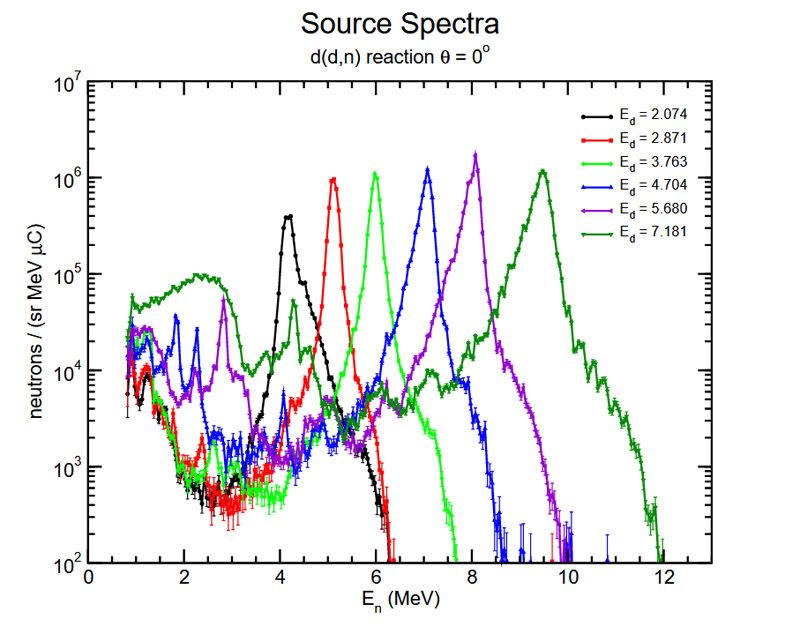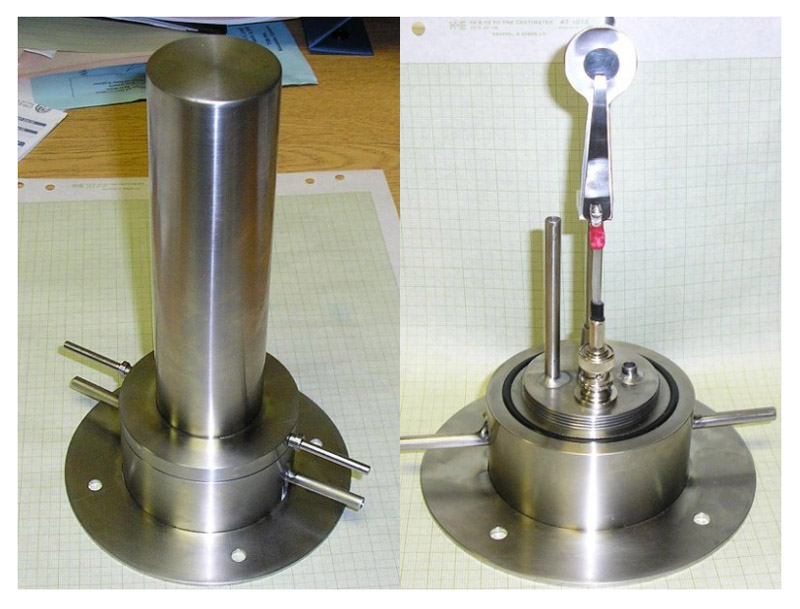Neutron Source Capabilities at Ohio University
Carl R. Brune, Steven M. Grimes, David. C. Ingram, and Thomas N. Massey
Department of Physics and Astronomy
Ohio University, Athens OH 45701, USA
(Dated: January 4, 2023)
Overview of Laboratory and Available Equipment
The Edwards Accelerator Laboratory at Ohio University (OU) was originally constructed with funds supplied by the U.S. Atomic Energy Commission and the State of Ohio. The 4.5- MV tandem van de Graaff was built and installed by the High Voltage Engineering Company, with the first experiments being performed in 1971. The accelerator has a unique T-shape configuration, with the charging belt running perpendicular to the acceleration column, which is designed to support high beam intensities. The laboratory was expanded in 1994 and now includes a vault for the accelerator, two target rooms, a control room, a chemistry room, an electronics shop, an undergraduate teaching laboratory, and offices for students, staff, and faculty. The Laboratory building supplies approximately 10,000 square feet of lab space and 5,000 square feet of office space. An upgrade to a Pelletron charging system is scheduled to take place in the fall of 2011. The laboratory supports a broad research program in the areas of nuclear structure, nuclear astrophysics, condensed matter physics, and applied nuclear physics. This document describes that the capabilities of the laboratory that are directly relevant to neutron production and measurement. Additional information about the laboratory is available in Ref. [1].
The 4.5-MV tandem van de Graaff accelerator and beamlines are shown in Figs. 1 and 2. This machine is presently equipped with a Peabody Scientific Cs sputter ion source that is used for the production of proton, deuteron, lithium, boron, and carbon beams. The typical maximum beam current available on target for proton and deuteron beams is 10 µA. A National Electrostatics Alphatross ion source is available for producing 3He− and 4He− beams. For these beams, the typical maximum beam current available on target is 0.5 µA. Pulsing and bunching equipment are capable of achieving 1-ns bursts for proton and deuteron beams, 2.5-ns bursts for 3,4He beams, and 3-ns bursts for 7Li. The 5-MHz fundamental frequency of our pulsing system leads to 200 ns between pulses. The time between pulses can be increased by discarding pulses using an electronic chopper.
The Edwards Accelerator Laboratory is a unique national facility. The combination of continuous and mono-energetic neutrons together with a well-shielded 30-meter flight path does not exist anywhere else in North America. The beam swinger facility is described in Ref. [2]. This combination of equipment permits measurements with high precision and low background. Several types of neutron detectors are available, including lithium glass, NE213, and fission chambers. The 3He BF3 Giant Barrel (HeBGB) neutron detector [3], a polyethylene moderator with embedded 3He and BF3 detectors, is located in the large target room. The laboratory has the licenses and equipment necessary for utilizing both solid and gaseous tritium targets.
The Edwards Accelerator Laboratory facilities are accessible to outside users. The three types of arrangements that have been successful are: collaboration with a faculty member at OU who has a program of research with objectives that can be met by collaboration with the outside user and for which there will be no additional costs to OU for the work being performed under the collaboration; collaboration with a faculty member at OU who has a program of research where the collaboration would be beneficial to that faculty member but where there may be some additional costs met by the outside user; and payment for the full cost of an experimental study not directly related to the funded research of any OU faculty member or where the data obtained are not being published for whatever reason.
We generally do not undertake “routine” work such as MeV ion beam analysis, ion irradiations, or electron spectroscopy analysis where such work can be done by commercial entities, unless it is part of a program of collaborative research involving the outside user. In other words, we do not compete with private industry as that might impair the tax-exempt status of the University and/or violate the conditions of grants from Federal agencies.
Specific Neutron Sources
The laboratory has both monoenergetic and “white” neutron sources available for measurements and detector calibrations. The available reactions utilizing gas cells include 3H(p, n), 2H(d, n), 3H(d, n), 15N(p, n), and 15N(d, n). Representative neutron yields for these sources are shown in Fig. 3. In total these will cover the energy range of 0.5 to 24 MeV with our available proton and deuteron energies. Figs. 4 and 5 show example neutron energy spectra measured with a 6.195-m flight path and 3-cm-diameter gas cell with 5-µm tungsten windows filled to 24 psi. We also have the capability to rapidly cycle between two gas cells, a technique that is very useful for measuring backgrounds [4].
For some applications, solid targets are desirable. Lower-energy neutrons can be produced by utilizing the (p, n) reaction on thin metallic lithium or Ti-3H targets. We commonly produce ≈ 15-MeV neutrons via the 3H(d, n) reaction by bombarding a solid tritium tritide stopping target with a 500-keV deuteron beam (the practical low-energy limit our our accelerator). This configuration generates 2.4 × 107 n/sr/µA/s (n/sr/µC) neutrons. In this case, typical beam currents are 1-3 µA, with the beam current being limited by the transmission of the accelerator which is not optimized for such low energy beams.
For calibration of detectors with the “white” sources and the time-of-flight technique, two standards have been developed: neutrons at 120º from the 7.44-MeV deuteron bombardment of a thick aluminum target [5] and neutrons at 60º from the 7.5-MeV bombardment of a thick natural boron target [6]. Both of these standards have been measured relative to the primary standard of 235U fission.
We have available a low-mass 252Cf fission chamber that is used for neutron detector calibration [7]. This source is shown in Fig. 6 and was 50 µCi in December 2009 (≈ 200, 000 neutrons/s). The shape of the neutron energy spectrum is known to 1-2% accuracy from 0 to 8 MeV neutron energy [8].
References
FIG. 3. The neutron yield of various neutron production reactions is shown based on a thickness equivalent to a 100 keV energy loss in the target. The calculation is for energy loss in the pure gas, except for 7Li, where it is for the pure metal.
FIG. 4. Experimentally-measured neutron spectra from the D(d, n) reaction.
FIG. 5. Experimentally-measured neutron spectra from the 15N(p, n) reaction.
FIG. 6. 252Cf fission chamber.






